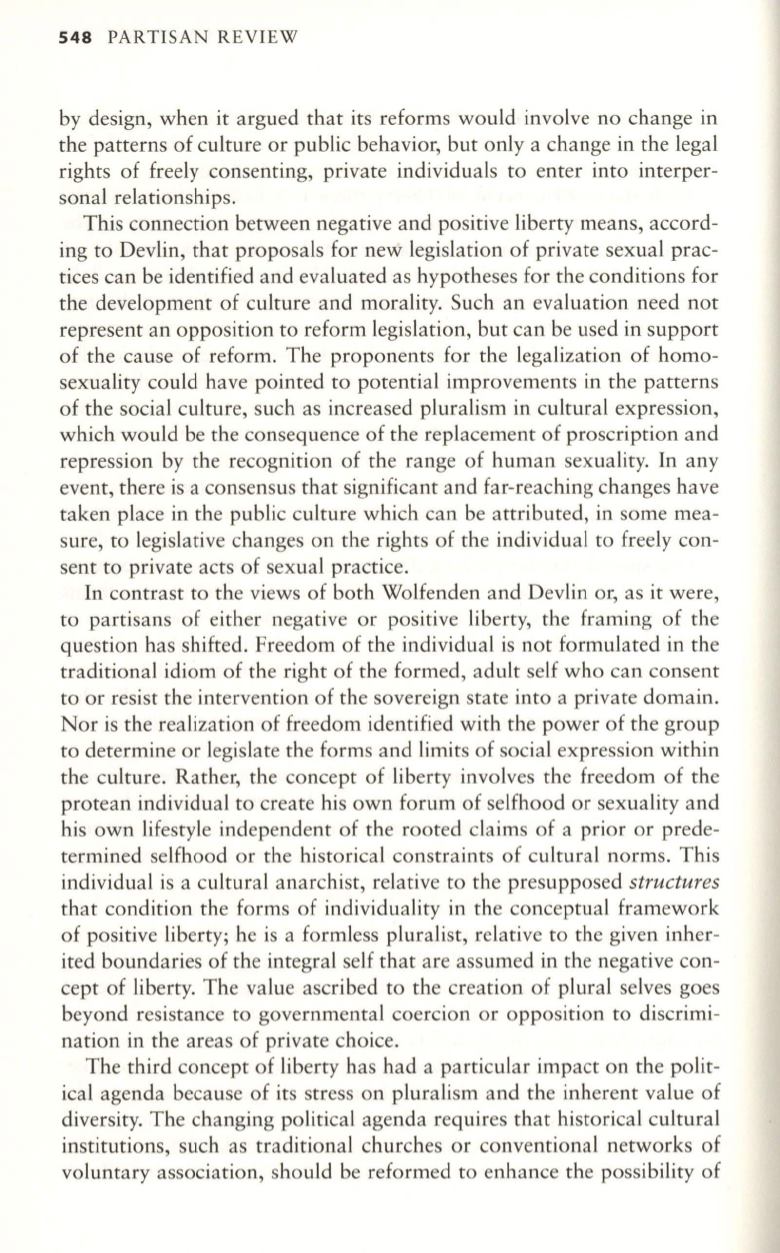
548
PARTISAN REVIEW
by design, when it argued that its reforms would involve no change in
the patterns of culture or public behavior, but only a change in the legal
rights of freely consenting, private individuals to enter into interper–
sonal relationships.
This connection between negative and positive liberty means, accord–
ing to Devlin, that proposals for new legislation of private sexual prac–
tices can be identified and evaluated as hypotheses for the conditions for
the development of culture and morality. Such an evaluation need not
represent an opposition to reform legislation, but can be used in support
of the cause of reform. The proponents for the legalization of homo–
sexuality could have pointed
to
potential improvements in the patterns
of the social culture, such as increased pluralism in cultural expression,
which would be the consequence of the replacement of proscription and
repression by the recognition of the range of human sexuality. In any
event, there is a consensus that significant and far-reaching changes have
taken place in the public culture which can be attributed, in some mea–
sure, to legislative changes on the rights of the individual to freely con–
sent to private acts of sexual practice.
In contrast to the views of both Wolfenden and Devlin or, as it were,
to
partisans of either negative or positive liberty, the framing of the
question has shifted. Freedom of the individual is not formulated in the
traditional idiom of the right of the formed, adult self who can consent
to or resist the intervention of the sovereign state into a private domain.
Nor is the realization of freedom identified with the power of the group
to determine or legislate the forms and limits of social expression within
the culture. Rather, the concept of liberty involves the freedom of the
protean individual to create his own forum of selfhood or sexuality and
his own lifestyle independent of the rooted claims of a prior or prede–
termined selfhood or the historical constraints of cultural norms. This
individual is a cultural anarchist, relative to the presupposed
structures
that condition the forms of individuality in the conceptual framework
of positive liberty; he is a formless pluralist, relative
to
the given inher–
ited boundaries of the integral self that are assumed in the negative con–
cept of liberty. The value ascribed to the creation of plural selves goes
beyond resistance
to
governmental coercion or opposition to discrimi–
nation in the areas of private choice.
The third concept of liberty has had a particular impact on the polit–
ical agenda because of its stress on pluralism and the inherent value of
diversity. The changing political agenda requires that historical cultural
institutions, such as traditional churches or conventional networks of
voluntary association, should be reformed to enhance the possibility of


